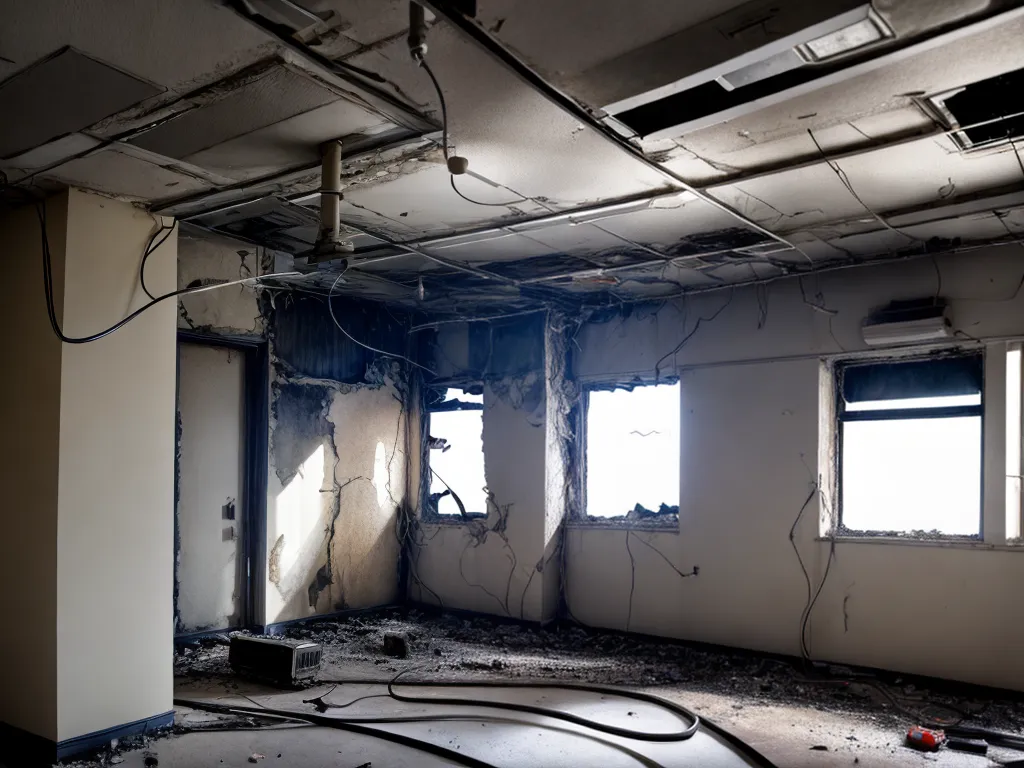
How to Minimize Electrical Fire Hazards in Older Commercial Buildings
Introduction
Electrical fires are a major risk in older commercial buildings. Faulty wiring, outdated electrical systems, and poor maintenance practices can all increase the chances of an electrical fire starting. As the owner or manager of an older commercial building, it is critical to understand where potential electrical hazards exist and how to minimize them. By taking proactive steps, you can greatly reduce the risks and protect your building, employees, and customers.
In this comprehensive guide, I will cover key areas to focus on to improve electrical safety, specific hazards to look out for, tips for regular inspections and maintenance, and when professional contractors should be brought in. Adopting these best practices can significantly reduce your fire risk.
Conduct a Thorough Electrical Inspection
The first step is to conduct a detailed inspection of your building's entire electrical system. While regular inspections should be scheduled, a comprehensive baseline assessment will identify potential hazards. Focus on these key areas:
Electrical Panels and Switchboards
-
Check for overloaded circuits - this can lead to overheated wires and connections. Verify circuits are properly rated for connected loads.
-
Look for signs of arcing like burnt marks - this indicates loose connections.
-
Test for hot spots on equipment using an infrared thermometer. Heat build-up can precede failure.
-
Voltage testing at the panel can uncover issues like unmatched phase voltages.
-
Inspect for broken breakers, faulty meters and corrosion. Replace deteriorated equipment.
Wiring and Cables
-
Check condition of wiring insulation. Brittle, cracked or frayed cables need replacement.
-
Exposed wires present a major shock and fire hazard. Fix loose connections and secure covers.
-
Verify proper wire gauges based on voltage and currents handled. Undersized wires can overheat.
Electrical Devices and Fixtures
-
Extension cords should not be used as permanent wiring - use outlet expanders instead. Limit daisy chaining.
-
Light fixtures/lamps should be properly rated for the building's line voltage and have bulbs of matching wattage.
-
Investigate tripped breakers or blown fuses for a specific circuit as they may indicate faults.
-
Check plugs and cords on devices for damage. Fraying or exposed contacts create hazards.
Address Identified Hazards and Deficiencies
The inspection process will highlight areas that require maintenance, upgrades or replacement. Developing a plan and addressing these findings is key to reducing risks.
Repair Deteriorated Wiring and Connections
Fixing corroded connections, ground faults and damaged insulation should be a top priority. Consult an electrician if significant wiring issues are uncovered.
Upgrade Outdated Equipment
Older switchgear, panels, and breakers should be replaced with up-to-date equivalents. Newer arc-fault and ground-fault interrupters can prevent fires.
Increase Electrical Capacity if Needed
If circuits are found to be overloaded, adding new dedicated circuits and panels may be required to meet building needs and codes.
Add Fire Prevention Devices
Smoke detectors, fire alarms, and sprinkler systems tailored to electrical areas can contain fires before major damage occurs.
Perform Regular Maintenance and Inspections
After addressing any major issues, establishing recurring maintenance procedures is crucial. A regular schedule of inspections, testing, and preventative maintenance helps spot problems early.
Monthly Infrared Scans
Use infrared thermography monthly to check for hot spots and heat build-up on electrical systems. Address problems immediately.
Quarterly Inspections
Conduct a full visual inspection of the electrical system each quarter. Check wiring, fixtures, panels, and devices for issues. Verify breakers are properly rated.
Annual Load Testing
Hire an electrician annually to conduct load testing on circuits and panels to ensure the system can safely handle demands.
Preventative Maintenance
Establish a schedule for cleaning panels, testing breakers, replacing surge protectors, and tightening connections. Replace old extension cords.
When to Call In Electrical Contractors
While properly trained facility managers can execute much of the preceding, electrical contractors should be utilized:
-
For the initial comprehensive electrical hazard audit of the building.
-
To address major deficiencies like re-wiring or installing new panels.
-
To perform electrical load testing/calculations for circuit capacity.
-
If the electrical system exhibits repeated or unresolved issues.
-
To provide training to building managers on inspections, testing, and maintenance best practices.
Foster an Electrical Safety Culture
Promoting continuous awareness and safe behaviors regarding electricity is important.
-
Train employees on electrical hazard awareness and reporting any observed issues.
-
Ensure good housekeeping around electrical areas - no stacked items or clutter.
-
Post safety signage like arc flash warnings on panels.
-
Restrict access to electrical rooms and educate on proper PPE.
Proactively managing electrical systems, trained personnel, and a culture of safety are the keys to minimizing electrical fire risks in older commercial buildings. Let this guide set you on the path to significantly reducing hazards. By putting these best practices into action, you can protect your people, property, and business.